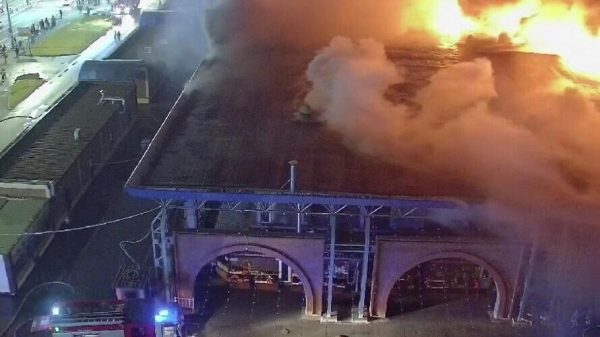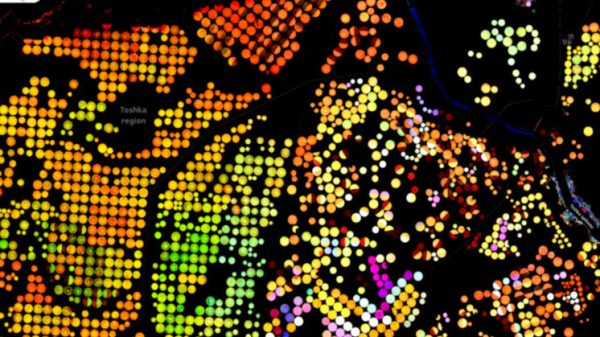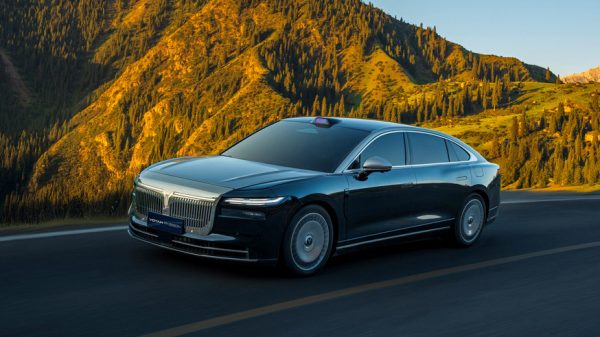Who will win the 2020 US election?
Results from the US election are now in full swing, as the final few Americans cast their votes on whether to re-elect President Donald Trump or oust him in favour of former Vice President Joe Biden.
Polling stations have now closed in a majority of states, including key battlegrounds like Florida, Texas, Pennsylvania and Michigan — marking the beginning of the end of a presidential campaign overshadowed by the coronavirus pandemic.
US 2020 election results bar
All of the races called so far have gone as predicted, including reliably red states like Kentucky, Mississippi and Tennessee for Trump and safe blue states like Vermont, Massachusetts and New York for Biden.
However voting has now ended in the key battleground of Florida, a state whose result will offer an indication of who is on course to win the 2020 presidential election.
Voting stations have also closed in the Rust Belt states of Pennsylvania, Michigan and Wisconsin — key to Trump’s victory in 2016 — as well as Texas, traditionally a Republican state but one that Biden has been polling strongly in.
Other states where voting has finished include Alabama, Connecticut, Delaware, Illinois, Maine, Maryland, New Hampshire, Pennsylvania, Rhode Island, Arizona, Colorado, Kansas, Louisiana, Nebraska, New Mexico, New York, North Dakota, South Dakota and Wyoming.
Final polling indicates Joe Biden is in with the best chance of winning tonight, leading Donald Trump nationally on average by 8.4 per cent at last reading, more than double Hillary Clinton’s lead by election day in 2016.
According to US forecasting site FiveThirtyEight, Biden has a nine in ten chance of victory, and the Democrats have a 72 per cent chance of taking control of the Senate, House and Presidency. Pollster YouGov is predicting Biden will sweep the board with 364 electoral college votes and 53.2 per cent of the popular vote.
Negative polling and dire predictions for Trump do not mean a shock result is impossible. Despite a tumultuous year his approval ratings have barely shifted, with a core support for his stewardship of the economy and stance on migration.
Geographical US election map
More projections of who’s on course for the White House are expected throughout the night. Check back to this page regularly to see the latest results as and when they come in.
The key swing states to watch tonight
All 50 states and the District of Columbia are voting today, but the outcome in just a handful will be enough to reveal who is on track for the presidency.
To win the election a candidate needs at least 270 of the 538 votes on offer in the US’s indirect voting system — the electoral college — where candidates pick up votes by coming first in a state and getting its proportional share of the total. Victory in California, population of 39.5m, earns you 55 electoral college votes, while winning Wyoming, home to 580,000, gets you three.
Pennsylvania, Wisconsin and Michigan are three key states to watch tonight. They are part of America’s ‘Rust Belt’ — a region hit hard by industrial decline — and were key to Trump’s victory in 2016. If Biden wins all three while keeping a grip on the states won last time by Clinton, he’s likely on course for the presidency.
US 2020 election table
Eyes will also be on Arizona, Florida and North Carolina — three swing states that lie in America’s Sun Belt that were all won by Trump last time round.
Of course all six of these states will only be pivotal if the race is tight — and Biden’s healthy polling lead means a clean sweep for the Democrat can’t be ruled out.
A striking feature of pre-election polling is it has suggested Biden could claim victory in states which have historically been Republican strongholds.
US 2020 election treemap
A Democrat polling so strongly in Arizona and Georgia, which last went blue in the 1990s for Clinton, as well as Texas, red since Carter in the 1970s, is the measure of landslides.
If polling is accurate all three states are on a knife-edge, with a margin of 2.6 per cent in Arizona, 1.2 per cent in Georgia, and 1.1 per cent in Texas.
What time will we get the final result?
We’re unlikely to know who’s won the presidency until at least the morning, but to get a good idea of who’s on track to win we don’t have to wait until one candidate picks up the needed 270 electoral college votes.
In 2016 Donald Trump’s surprise victory was clear by about 3.30am to 4am GMT following a string of swing states declaring in his favour and making his win all but certain. He officially crossed the 270 threshold at around 7.30am GMT.
That said, if the race is tight, or if counting the vast number of votes by post due to the pandemic proves overwhelming, delays to the declaration of a winner are possible.
What time do final polls close?
Most states began counting mail-in ballots and those turning out to stations early before election day, but in several others — including key swing states like Pennsylvania and Wisconsin — laws prevent ballots from being checked until election day itself.
Combine these barriers with a tight race and then the Biden or Trump campaigns considering legal action to force recounts, and it’s possible to see how it might be some time before we know for sure who’s won.
How the 2020 campaign played out
Dominated by the spread of Covid-19, the 2020 presidential race has been far from traditional.
While Trump continued encouraging mass rallies the length and breadth of the country, Biden began the year with a more muted tone, cancelling in-person rallies and turning to virtual town halls and fundraisers.
2020 presidential campaigning (Trumps rallies have focussed on the rust belt)
Key rust-belt battleground states of Pennsylvania and Michigan have seen the most campaign visits from the two candidates, with Trump holding around double the number of events as the former Vice President since February.
With 15 rallies in Pennsylvania and 13 in North Carolina by the final day of the campaign, the incumbent has been targeting states he narrowly flipped from the Democrats in 2016 in the hope of a replay of the result four years ago.
But in terms of spending it is Biden who has expended the most — with vast TV and online advertising campaigns. To date, Biden has outspent his opponent by $1.40 to every dollar spent by Trump.
Turnout and the electoral college
Two of the last five presidential elections have been overshadowed by controversy — with the winner of the popular vote losing the electoral college, and the presidency.
With the winner-takes all nature of the electoral college system pinning the stakes of an election on a handful of states, the difference between the popular vote share and state returns can be stark.
Electoral college and popular votes in US presidential elections
The 2020 election could follow a similar path, with millions of mail-in votes potentially taking days to count, at which point a candidate could claim electoral college victory.
Ahead of election day more than two thirds of the total 2016 vote had already been cast, with the total vote from last election being exceeded in Texas days before ballot booths opened.
Early vote as % of 2016 turnout
By November 2, four states had more mail-in or early in-person votes than the total ballots cast in the 2016 election — Texas, Hawaii, Washington and Montana.
In all almost 98m votes had been cast before election day arrived — at least 35m of which were early in-person votes.
It comes as several states pivoted to mail-in voting due to the Covid-19 pandemic, and a desire to avoid crowds at polling stations could suppress voter turnout on the day.
In California alone more than 12m have returned mail-in ballots, with close to another 10m requested but not yet returned.
Overall around 38 per cent of the voting age population had already cast their vote before election day.
US presidential elections turnout
General turnout won’t be known until the polls close, but recent years have seen a downturn.
Just 61.4 per cent of the voting age population turned out to vote in 2016 — the lowest turnout since 1996. The slump arrived as the black vote fell following the end of Obama’s second term in office, which had seen a surge during his presidency.
66.2 per cent of eligible black voters black voters turned out in 2012 — higher than turnout among white voters (64.1).
By 2016 turnout among black voters had slumped to 59.4 per cent.
What other results are we getting tonight?
Americans are not just voting for their next president tonight — also on the ballot across the country are candidates for the US Congress.
Whoever wins the White House won’t be governing alone, as laws in the US are voted on by both the House of Representatives and Senate, Congress’s two chambers.
All 435 seats of the House — where the Democrats have a majority following success in the 2018 midterm elections — are up for election, while 35 of the 100 seats in the Republican-controlled Senate are on the ballot.
US Election 2020 Congress
On the cards tonight is a ‘blue wave’ — Democrats seizing control of both the Presidency and the Senate and keeping their majority in the House. The Senate race is especially close, with eight of the top 10 seats viewed as most likely to flip, based on polls by CNN, held by Republicans.
The party is defending 23 seats this year, compared to just the Democrats’ 12, and a loss of the Republican majority can’t be ruled out.



















































Свежие комментарии